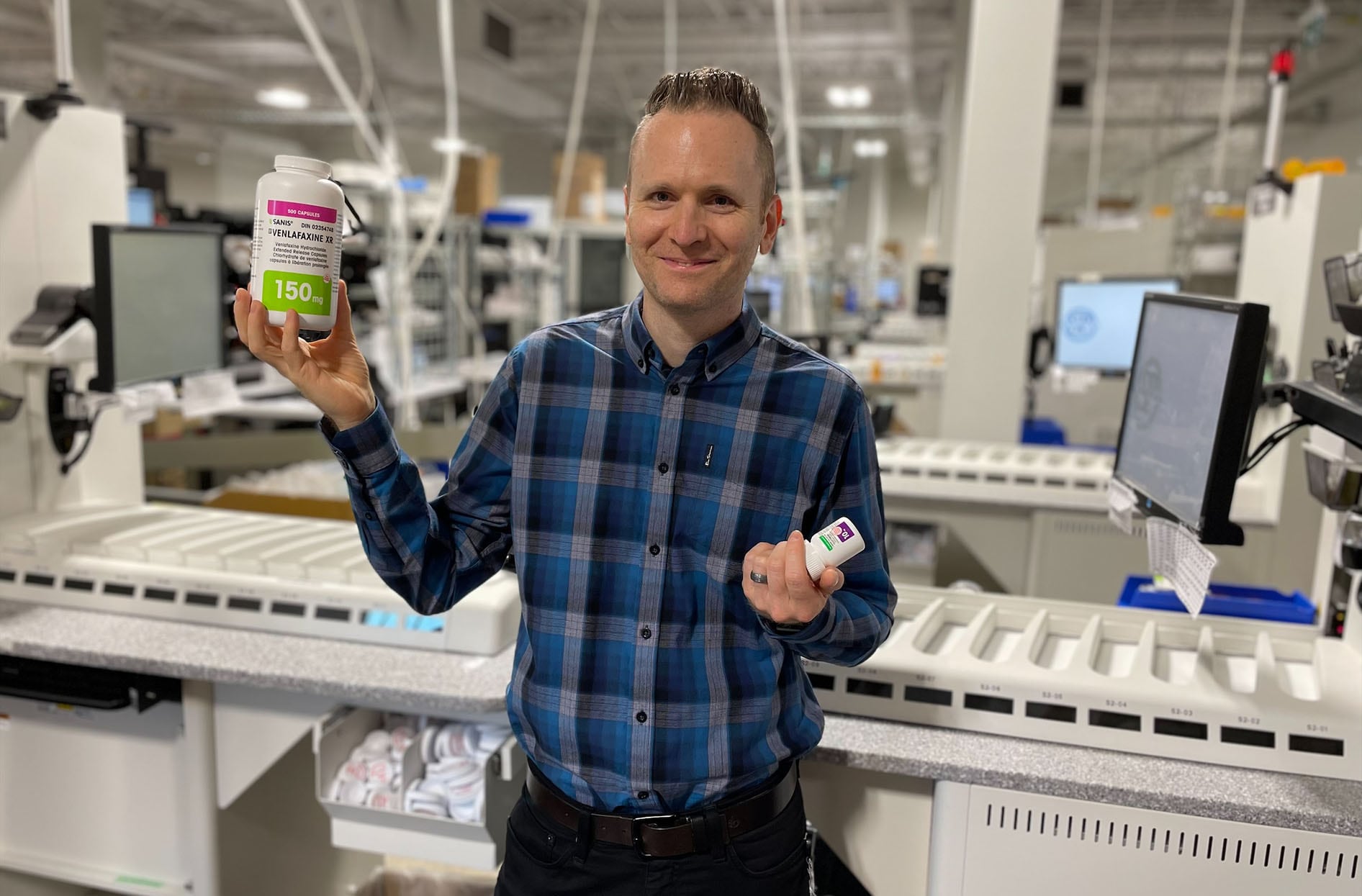Health and wellness
July 13, 2022James helps reduce plastic waste

There’s a plastic-saving campaign going on behind the scenes at your local Shoppers Drug Mart® pharmacy. Or, more accurately, at the central fill sites used by high-volume stores to fill prescriptions.
There are currently two Ontario fill sites, plus one facility each in British Columbia, Alberta and Quebec. In addition to a team of skilled employees, each site uses robots to fill prescription orders and package them for delivery. This model frees up pharmacists’ time in-store so they can focus on delivering various services to their patients, not strictly dispensing. Unsurprisingly, the central fill sites have had a huge impact on customer experience—but recently, Shoppers Drug Mart saw a way to make them even better.
As you might expect, there’s a lot of plastic involved in filling prescriptions. Medicine arrives at fill sites in bulk, contained in plastic bottles and is then repackaged into blister packs (plastic packages where pills can be popped out) or the amber-hued plastic vials patients receive. But recently, as part of its ESG (Environmental, Social, and Governance) commitments, the company saw a simple way to reduce the amount of plastic waste created during this process: make the stock bottles bigger.
“We do have a pretty big focus on recycling but making the actual bulk bottles larger targets the source of the problem, which is reducing the amount of plastic that's used in general,” says James Eaman, Director, Project Management, Automation and Continuous Improvement. “If you reduce the amount of plastic, you don't even have to go through the process of recycling—and that matters, because recycling does still have a carbon footprint.”
James’ team started by connecting with Sanis, the division of Loblaw that packages its generic medications, to see which SKUs could easily be changed.
“They are part of the organization, so they want to work with us, and we have a bit more control than we would with external suppliers,” James explains.
Vitamin D was the first potential use-case, and so far, it has been a resounding success. Simply by switching from bottles that can hold 250 tablets to those that can hold 2,000 tablets, these fill sites are saving 17.6 kg of plastic per period, or the equivalent of 17,000 bottles per year! Recently adding an additional eight products has reduced the per period plastics by a total to 182.1kg!
James’ team has compiled a list of other generic molecules that will make good candidates for this project, but he says, the company’s not stopping there.
“Once we get to the point where we’ve maximized what we can accomplish internally, we’ll start looking to our external providers to see what kind of opportunities exist there.”